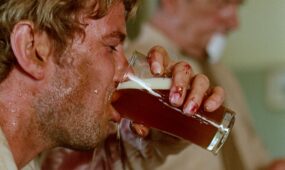Film review: Glass
Film & TV
M Night Shyamalan combines the characters from Unbreakable and Split to bring his alternative vision of the superhero series to its long-awaited climax.

It’s been 18 years since M Night Shyamalan’s first thought-provoking and sophisticated venture into the superhero genre with Unbreakable, a film which still stands as one of the most interesting of its kind and, in my opinion, one of the director’s best.
Then came Split in 2016, the second instalment in this unusual superhero series and a film that felt more at home in the horror genre. And now Glass reunites all the characters and brings Shyamalan’s vision to a head in a film that is both a superhero film and a commentary on the genre itself.
Two of Glass’s main characters had their first appearance in Unbreakable, including David Dunn (Bruce Willis), the Philadelphian security guard who, upon discovering he was physically indestructible, turned himself into the vigilante “The Overseer”. Dunn’s comic-book-style antagonist is Elijah Price (Samuel L Jackson), aka “Mr Glass”, a character with bones as brittle as his moniker who is so convinced of the existence of real-life superhumans that he master-minded a series of mass-fatality incidents to uncover them.
Making up the superhuman trio is Kevin Wendell Crumb (James McAvoy) from Split, a man with 23 distinct personalities who call themselves “The Horde” plus a 24th personality dubbed “The Beast”, who has superhuman abilities and an appetite for the flesh of teenage girls.
The film opens with Dunn in vigilante-mode, working with his son Joseph (Spencer Treat Clark) to find “The Horde” after they kidnapped four cheerleaders and chained them in a factory to await the arrival of “The Beast”.
Both Dunn and “The Horde” are being hunted by the police, who seem to be just as motivated to apprehend a vigilante as they are to find a cannibal. Both are captured and incarcerated in the Raven Hill Memorial Psychiatric Research Centre, the same asylum where “Mr Glass” has been housed for the last 19 years.
To the audience, these three may be a hero and two villains, but to psychiatrist Dr Ellie Staple (Sarah Paulson) all of them are suffering from the same mental disorder: the grandiose delusion that they possess the superhuman characteristics of comic-book characters.
“Mr Glass” and “The Beast”, driven by the need to reveal their powers to the world, form a natural alliance, while Dunn only wants to protect the world from the havoc the other two will undoubtedly wreak bringing their plans to fruition.
While viewers don’t necessarily need to have seen Unbreakable or Split to make sense of the plot, the three films do form a world akin to the Marvel or DC universes, where a cast of characters move in and out of each other’s films but ultimately serve one over-arching narrative.
Shyamalan’s alternative version of the superhero blockbuster is refreshing, yet Glass feels as if it comes a little late to the party. Eighteen years ago, Unbreakable was innovative because it recognised our society’s burgeoning obsession with comic-book heroes and the film itself was a timely and insightful commentary on the genre it embodied. Shyamalan uses Glass to continue this commentary but to audiences now living in a culture saturated with superhero cinema, its insight feels belated.

Get InReview in your inbox – free each Saturday. Local arts and culture – covered.
Thanks for signing up to the InReview newsletter.
Glass’s self-reflection about comic-book tropes, characterisation and narrative-arcs would’ve been far more powerful a decade ago, before cinema goers were over-exposed to the genre.
Nonetheless, it is an insightful and highly engaging film, and I thoroughly enjoyed the closure it brought to a cleverly-wrought series. Shyamalan does not disappoint when it comes to providing his signature plot twist (or two) either.
https://www.youtube.com/watch?v=mWtXU7vs8fQ
Support local arts journalism
Your support will help us continue the important work of InReview in publishing free professional journalism that celebrates, interrogates and amplifies arts and culture in South Australia.
Donate Here






Comments
Show comments Hide comments